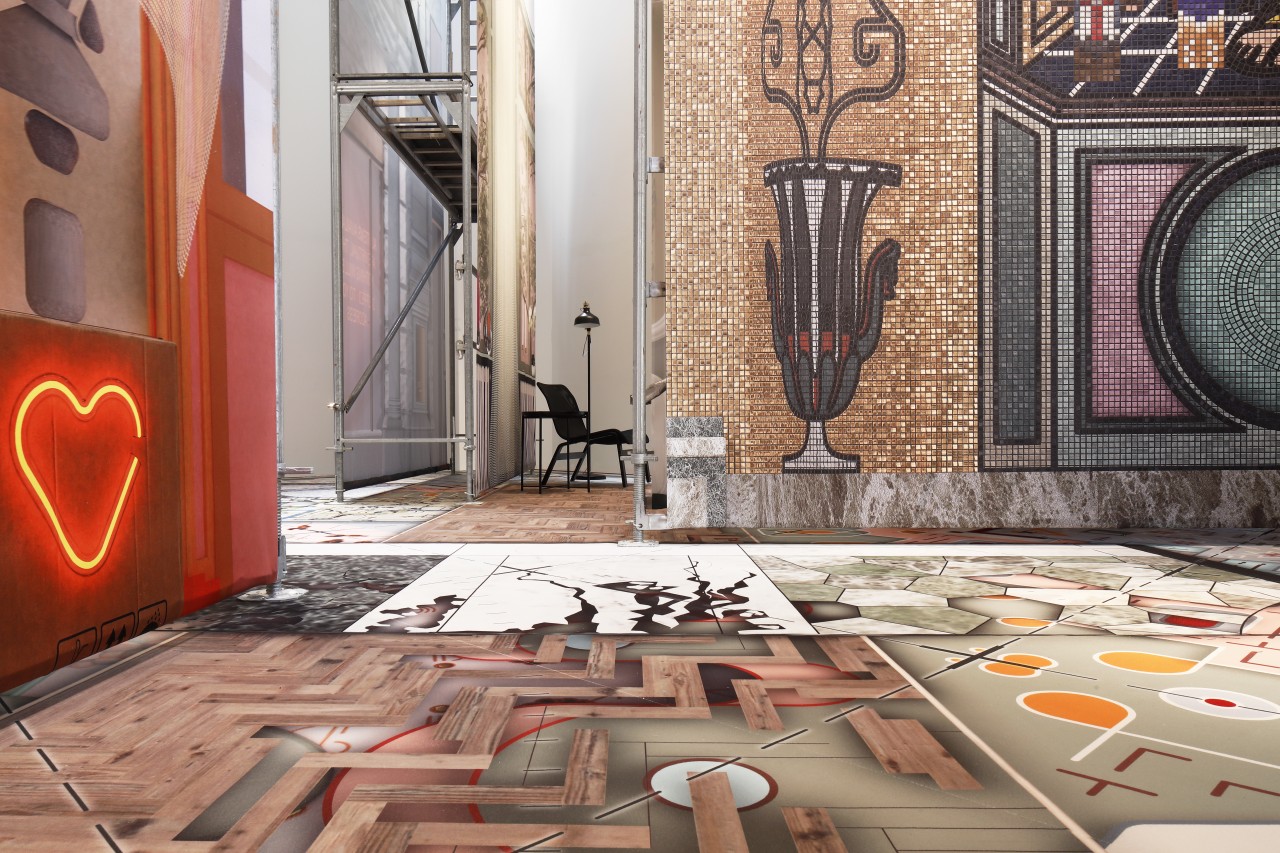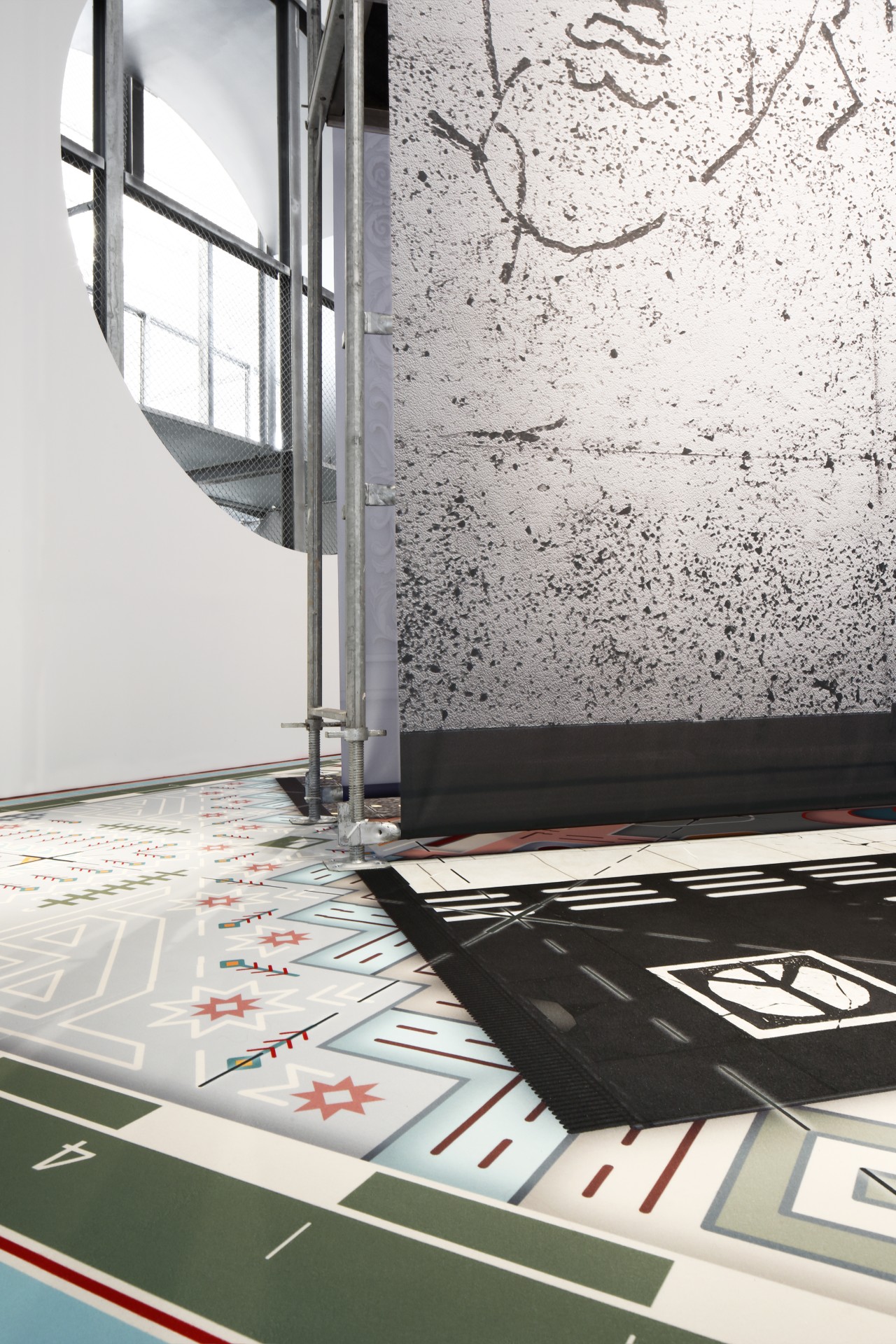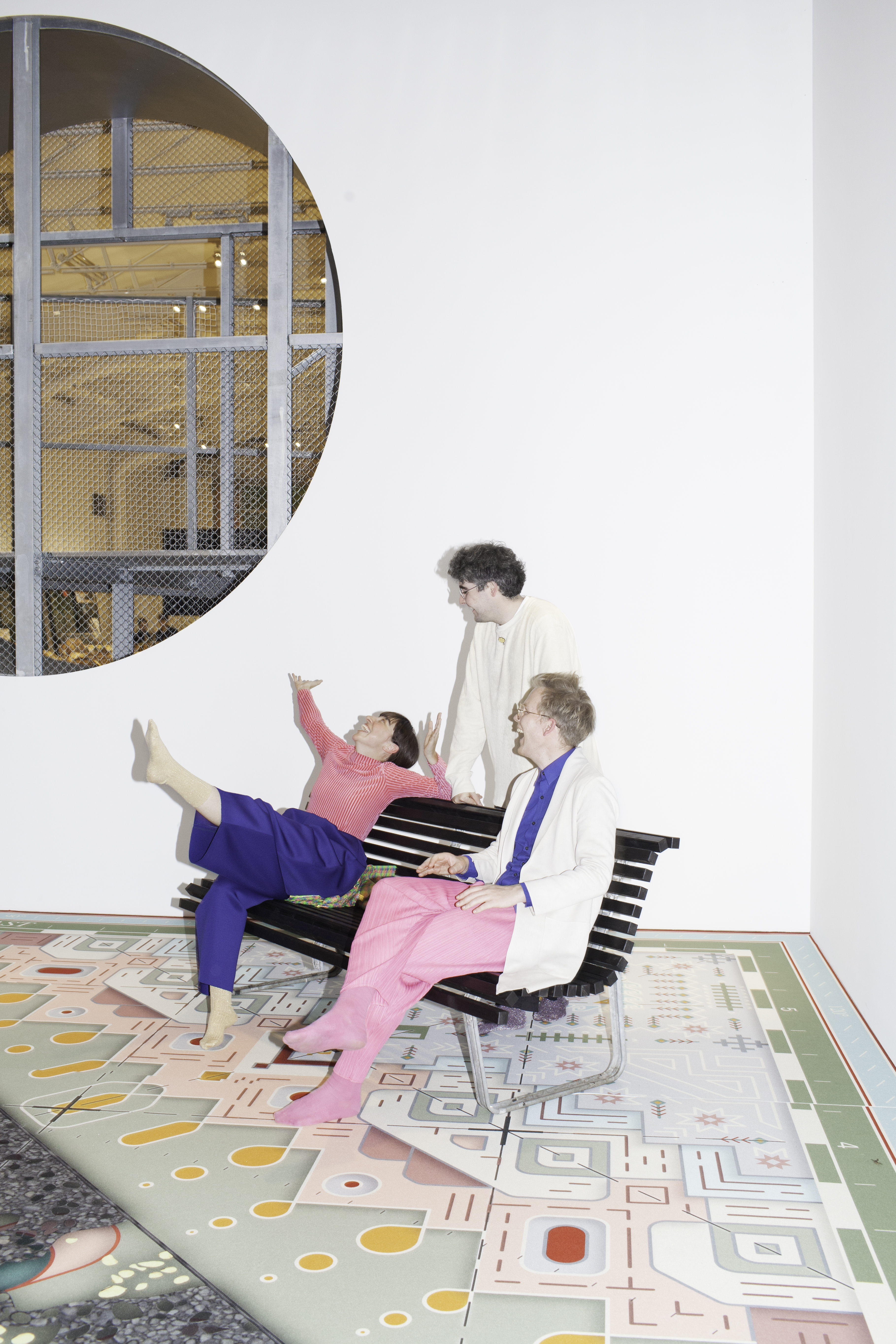In Value in the Virtual the London-based architecture studio Space Popular unfold an immersive installation exploring the role of architecture, and architects, in the design of virtual worlds.

Value in the Virtual presents a vision of the latent potential of spatial design in and for virtual environments. Shaped by the practice and conceptual lens of Lara Lesmes and Fredrik Hellberg (Space Popular), the installation articulates a direction for architecture which interfaces with cognitive science, colour theory, and the spectacular possibilities laid before us at the dawn of an imminent, immersive virtual reality.




Value in the Virtual
In 1935, the American science fiction writer Stanley Grauman Weinbaum published Pygmalion’s Spectacles, one of his final novellas and the first fictional model for the systems and experiences that we now describe as Virtual Reality (VR). The story opens in Manhattan, with a chance encounter between Dan Burke, an employee of the Board of Trade in Chicago, and Professor Albert Ludwig, a “gnome-like” man bristling with intrigue. Taking shelter from the rain, they discuss philosophy and human perception, in which the professor argues that the sensations we feel are in fact mental phenomena – they exist not in the world, but in our minds. “But how, then,” he ponders, “do we know that objects themselves do not exist only in our minds?” Waving at the “light-flecked buildings” across Central Park, he asserts to Burke: “You do not see that wall of masonry; you perceive only a sensation, a feeling of sight. The rest,” he surmises, “you interpret.”
Time and again, science fiction has prophesised the very technologies that are now accelerating toward broad availability and widespread use. From E. M. Forster’s The Machine Stops (1909) to William Gibson’s Neuromancer (1984), visions of a world in which ’virtual’ environments and interactions are the norm bleed from the pages of fiction and raise some of the more urgent ethical questions of our time. In the sphere of architecture and design, such questions are particularly acute. What form should an architectural value system take, for instance, when it expands from the physical world into virtual multiverses? If the designers of these environments are not bound by a requirement to shelter, nor required to adhere to the various physical limitations imposed by building in the ‘real’ world, what could be expected from them? Ultimately, and perhaps most importantly, what is the role of the architect and designer in this transition?
With these questions in mind, Value in the Virtual presents a vision of the latent potential of spatial design in and for virtual environments. Presented through the practice and conceptual lens of Lara Lesmes and Fredrik Hellberg, creative directors of the London-based architecture studio Space Popular, this installation articulates a direction for architecture which interfaces with cognitive science, colour theory, and the spectacular possibilities laid before us at the dawn of an imminent, immersive virtual reality.
The six environments in Boxen make reference to spaces and places that can be found in Stockholm. The totems, which represent gateways to a virtual layer, explore shifting value systems in a future virtual ‘built’ environment. From the Golden Hall of Stockholm City Hall, which hosts civic functions from civil marriages to the annual Nobel Prize banquet, to Östermalmstorg subway station and the public art of Siri Derkert, these environments span public, private and in-between spaces that together comprise the fabric of the city. What you see in Boxen can be experienced by anyone, at anytime and in anyplace, through Sansar – one of the world’s largest social VR platforms. The six environments coexist simultaneously as a virtual layer, which may be experienced through any VR hardware both in and outside of Boxen.
If virtual reality is no longer science fiction then it is our collective duty, both as potential users and as citizens of livable domains yet to be designed, to take responsibility for a technology that will in all likelihood dominate our everyday experiences and interpersonal interactions in the imminent future. For this reason, Value in the Virtual is intended as a shared space and testing ground for discussion about the role of the architect, and of architecture, in the burgeoning virtual sphere.
Värde i det virtuella
År 1935 publicerades Pygmalion’s Spectacles, en av den amerikanske science fiction-författaren Stanley Grauman Weinbaums (1902–1935) sista noveller. Berättelsen innehöll även den första fiktiva modellen för den uppsättning av system och upplevelser som vi idag lärt känna som virtuell verklighet (virtual reality – VR). Novellen tar sin början på Manhattan med det slumpartade mötet mellan Dan Burke, anställd vid Chicagos råvarubörs, och den fängslande professorn Albert Ludwig, en skäggig ”trädgårdstomte” till man. Medan de tar skydd från regnet samtalar de om filosofi och den mänskliga perceptionsförmågan. Professorn gör gällande att de sinnesintryck vi upplever inte är mer än mentala fenomen – enbart existerande i våra huvuden utan förankring i den verkliga världen. ”Men hur”, resonerar han, ”vet vi att objekten enbart existerar i sinnevärlden?” Gestikulerande mot de ”ljusfläckiga” byggnaderna på andra sidan Central Park försäkrar han för Burke: ”Du ser inte den där stenfasaden, du kan bara förnimma en känsla av ett synintryck. Allt annat är en tolkning.”
Då och då har science fiction-litteraturen kunnat ge oss närmast profetiska förutsägelser av teknik som först nu börjat accelerera allt snabbare på sin färd mot allmänt utbredd tillgänglighet och användning. Från E.M. Forsters The Machine Stops (1909) till William Gibsons Neuromancer (1984) har glimtar av världar där ”virtuella” miljöer och relationer är normen sipprat fram mellan sidorna och de har framställts för vad de faktiskt är: några av vår tids mest tillspetsade etiska dilemman. Inom arkitektur- och designfältet är dessa särskilt angelägna frågor. Hur ska, för att ta ett exempel, ett värdesystem formuleras för arkitekturen när den nu expanderar från den fysiska världen till den virtuella? Om de som ska formge dessa utvidgade miljöer inte är bundna av kravet på att tillhandahålla skydd mot väder och vind eller de fysiska begränsningar som är förutsättningen för allt byggande i den ”verkliga” världen, vad kan vi då förvänta oss av dem? Och sist, men inte minst, vilken roll har arkitekten och formgivaren i allt detta?
Med dessa frågor som utgångspunkt erbjuder Värde i det virtuella oss en vision av den latenta potentialen för rumslig gestaltning i och av virtuella miljöer som bara väntar på att realiseras. Utifrån den verksamhet som Lara Lesmes och Fredrik Hellberg bedriver genom sitt Londonbaserade arkitektkontor Space Popular och den skarpa blick de har för det konceptuella har installationen blivit uttryck för en ny riktning inom arkitekturen som gränsar till kognitionsvetenskap, färgteori och de spektakulära möjligheter som vi kan förvänta oss på tröskeln till en ny och fördjupad virtuell verklighet.
Boxens sex miljöer refererar till verkliga platser i Stockholm. Miljöerna representerar inte bara portaler till ett virtuellt lager – de utforskar förändrade värderingar i en framtida virtuell verklighet. Från Gyllene salen i Stadshuset, där allt ifrån borgerliga vigslar till den årliga Nobelfesten hålls, till Östermalmstorgs t-banestation, med sin konstnärliga utsmyckning av Siri Derkert, spänner miljöerna från det offentliga till det privata och allt däremellan som utgör stadsväven. Miljöerna i Boxen är sammanflätade med ett virtuellt lager som kan upplevas med VR-teknik i utställningen. Genom Sansar, en av världens största VR-plattformar, kan det du ser i Boxen även upplevas av andra – när som helst och var som helst.
Om den virtuella verkligheten inte längre är science fiction bör det vara vår gemensamma plikt både som tänkbara användare av, men även som medborgare i, de livsmiljöer som ännu inte gestaltats att ta ansvar för en teknologi som med största sannolikhet inom kort kommer att dominera våra upplevelser och mellanmänskliga relationer. Av det skälet är Värde i det virtuella tänkt som ett gemensamt rum och en plats där en diskussion om arkitektens och arkitekturens roll i den spirande virtuella sfären kan ta sin början.


